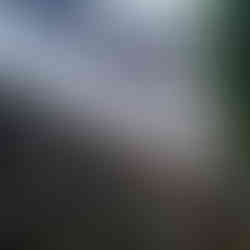Japan Tour (6) - Kobe: a city resurrected
- atricgery
- Oct 23, 2024
- 3 min read
23 September 2024

When we decided to spend the weekend in Kobe, we were unaware that this city, like Hiroshima, had suffered a terrible catastrophe not so long ago. In 1995, an earthquake of a magnitude of 7.1 on the Richter scale destroyed 400’00 buildings and killed over 6’500 people.
Few signs of that terrible event remain. Thirty years on, Kobe is an attractive, cosmopolitan harbour city with its tree-lined boulevards, modern buildings, luxury stores and busy thoroughfares. Perched on a hillside sloping down to the sea, it exudes an air of serenity, gentility and prosperity that belie its recent past. Truly a testament to the Japanese ability to recover from devastation and swiftly rebuild anew.
Kobe was an important maritime gateway from the earliest days of trade with China and home to one of the first foreign settlements after Japan reopened to the world in the mid-19th century. Most of the foreign merchants and diplomats settled in a hilly district at the foot of the Rokko mountain range, called Kitano-cho. More than a dozen of the former mansions, known as Ijinkan, remain in the area and are open as museums. The two best-preserved homes are the red-brick Weathercock House, built in 1909 for a German trader, and the wooden, jade-green Moegi House, built in 1903 for the former US consul. It is a pleasant area to walk in with great views of the city beyond.
Kobe is probably best known for Kobe Beef, a prized Japanese delicacy and one of several breeds of Wagyu, or Japanese cattle, which are bred throughout the country. Kobe Beef is a tender, flavorful meat that is well marbled with fat and which sizzles when it hits the butter in the pan creating a rich, smooth flavour. We enjoyed ours in a registered Kobe beef teppanyaki restaurant downtown, grilling our own on an iron plate. It was delicious and well worth it, even though it was also the costliest meal of our whole stay in Japan (16’000 yen or about $100 USD for two).

We then took a digestive walk down to Meriken Park, a nice waterfront park built on reclaimed land in Kobe's port area. It is home to some of the city's more iconic contemporary architecture such as the red Kobe Port Tower, a unique red-painted steel structure standing 108 metres tall, and the Kobe Maritime Museum.
Nankinmachi is a compact Chinatown in central Kobe. It was developed by Chinese merchants who settled near Kobe Port after the port was opened to foreign trade in 1868. Two main streets run through the district, meeting each other at a small plaza in the center and are packed with shops, restaurants and street food stands.
That Sunday morning, we took a train to visit Hijemi Castle, about an hour away. Hijemi is Japan's most magnificent castle, built in 1580 and one of only a few original castles from that era (most are modern concrete reconstructions). It was also never attacked or besieged.
There's a five-storey main keep and three smaller keeps, all surrounded by moats and defensive walls. Unfortunately, it was rather crowded as we followed the route around the keeps (maybe better to avoid going there at the weekend!) There are also lovely city views from the top floor of the main keep.
In the castle grounds, there was also a modern recreation of an Edo-era samurai residence, with a beautiful strolling Japanese garden complete with a central pond (filled with koi) and a teahouse. The layout and building design were based on archaeological excavation of the original residence.
We rounded off our short visit to Kobe in a typical Japanese restaurant that evening with a Japanese-only menu and no English speakers. Still, Mylene was able to order us a very satisfying meal of sushi, crispy fried chicken (karaage) and fried udon. Nice one, darl!


















































Comments